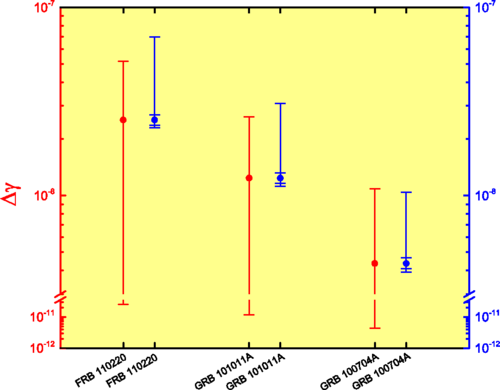Mysterious radio signals from space discovered to be a much better test of Einstein's General Relativity theory

December 30, 2015
Limits on the differences of the γ values for three FRB observations. Credit: Phys. Rev. Lett. 115, 261101 – Published 23 December 2015. DOI: 10.1103/PhysRevLett.115.261101
dx.doi.org/10.1103/PhysRevLett.115.261101
A new way to test one of the basic principles underlying Einstein's theory of General Relativity using brief blasts of rare radio signals from space called Fast Radio Bursts is ten times, to one-hundred times better than previous testing methods that used gamma-ray bursts, according to a paper just published in the journal Physical Review Letters. The paper received additional highlighting as an "Editor's Suggestion" due to "its particular importance, innovation, and broad appeal," according to the journal's editors.
The new method is considered to be a significant tribute to Einstein on the 100th anniversary of his first formulation of the Equivalence Principle, which is a key component of Einstein's theory of General Relativity. More broadly, it also is a key component of the concept that the geometry of spacetime is curved by the mass density of individual galaxies, stars, planets, and other objects.
See full text